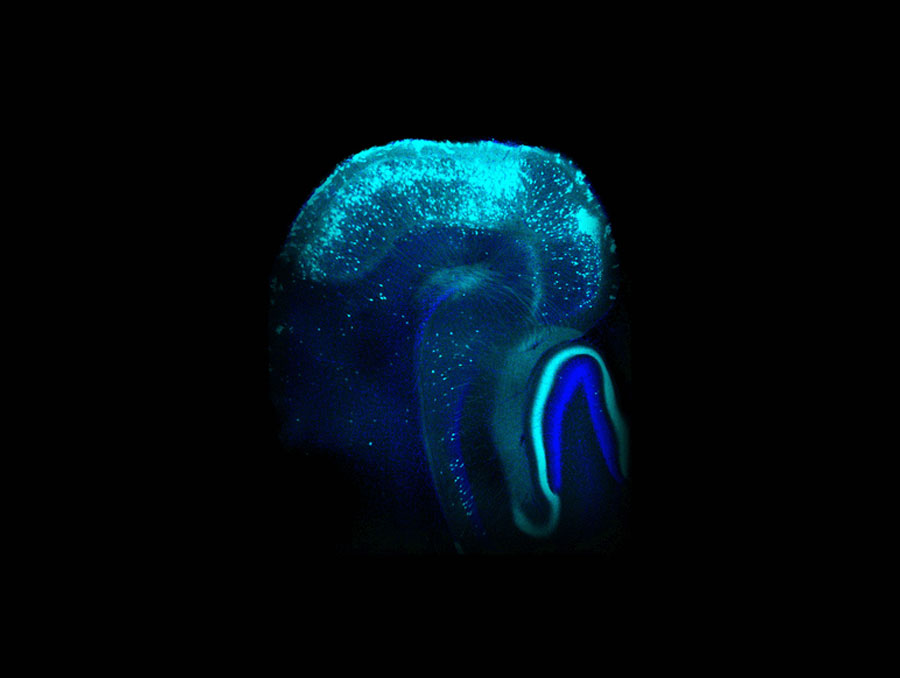The Journal of Neuroscience is one of the most impactful journals in the field of neuroscience. The cover of the May, 26 2021 issue features an image from Assistant Professor Simon Pieraut’s paper, “Experience-Dependent Inhibitory Plasticity Is Mediated by CCK+ Basket Cells in the Developing Dentate Gyrus”. The lead author of the paper is Pieraut’s postdoc, Ting Feng. Pieraut’s other co-authors are three current or former University undergraduates, Christian Alicea, Vincent Pham, and Amanda Kirk, who all worked in Pieraut’s lab. The work was supported by funding to Pieraut as part of Foundation Professor Michael Webster’s NIH Integrative Neuroscience COBRE grant as well as with COBRE support for the Cellular and Molecular Imaging Core (which is directed by Associate Professor Alexander van der Linden). The paper reports fundamental findings of interest to neuroscientists, and these finds may eventually contribute to our understanding of psychiatric disorders. Pieraut does a great job of translating his highly technical work into layperson’s terms, as follows.
“Brain plasticity is triggered by experience during postnatal brain development and shapes the maturing neural circuits. In humans, altered experience-dependent plasticity can have long-lasting detrimental effects on circuit function and lead to psychiatric disorders. Yet, the cellular mechanisms governing how early experience fine-tunes the maturing synaptic network is not fully understood. Here, taking advantage of an enrichment-housing paradigm, we unravel a new plasticity mechanism involved in the maintenance of the inhibitory to excitatory balance in the hippocampus. Our findings demonstrate that cortical activity instructs the assembly of the CCK+ basket cell network. Considering the importance of this specific cell type for learning and memory, experience-dependent remodeling of CCK+ cells may be a critical determinant for establishing appropriate neural networks.”












